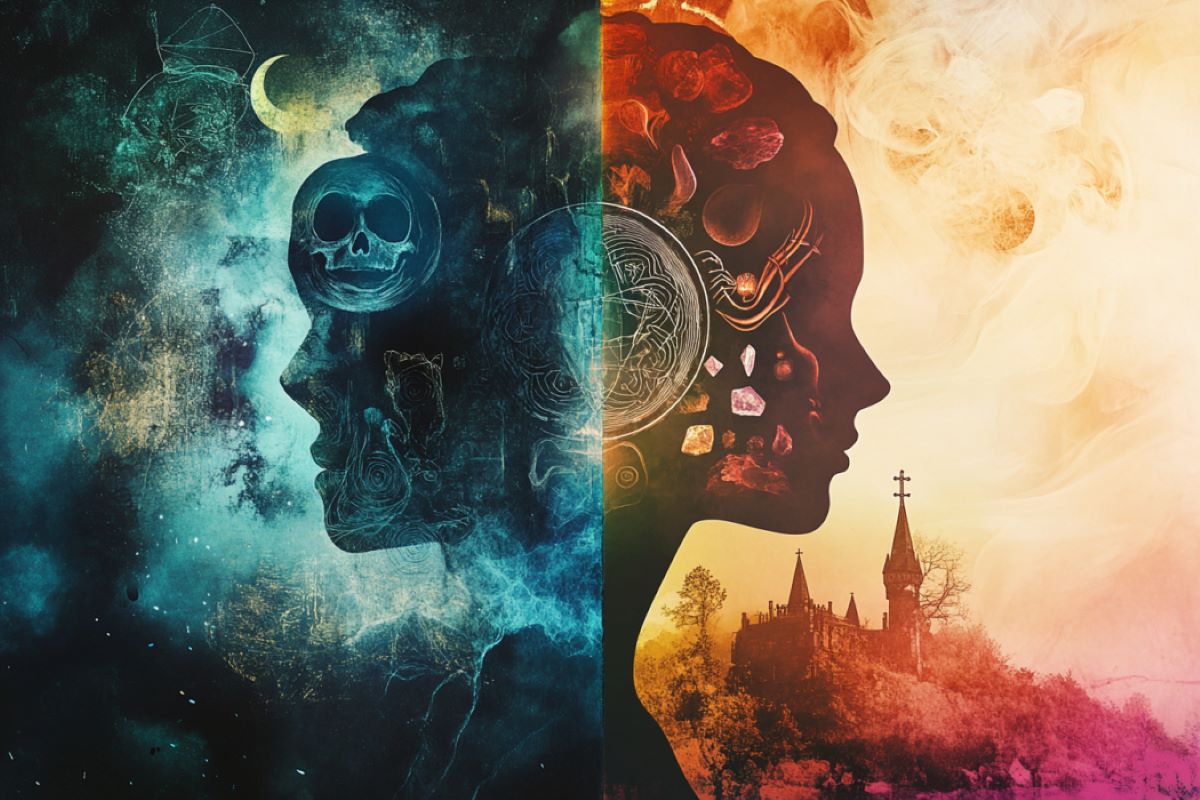Summary: Traditional paranormal beliefs, such as witchcraft and religious superstition, are linked to higher stress and reduced coping ability, while new age beliefs, like spiritualism and precognition, show no such link. Researchers used an improved scale to analyze responses from over 3,000 participants, revealing that traditional beliefs may reflect anxieties about external control.
The findings highlight the psychological differences between belief types but cannot confirm cause-and-effect relationships. Future research could explore how paranormal beliefs shape behaviors, such as attitudes toward alternative medicine and conspiracy theories.
Key Facts:
- Traditional paranormal beliefs were associated with greater stress and reduced coping ability.
- New age beliefs were not linked to stress or coping tendencies.
- The study highlights the psychological impacts of external control perceptions in traditional beliefs.
Source: PLOS
In a new study, feelings of distress and reduced ability to cope with stress were associated with traditional paranormal beliefs, but not with new age philosophy. Kenneth Drinkwater Ph.D. of Manchester Metropolitan University, U.K., and colleagues present these findings in the open-access journal PLOS ONE on November 13, 2024.
Prior research has suggested that paranormal belief, in general, is not linked to poorer psychological wellbeing, but that certain facets of paranormal belief, such as superstition, may be linked with stress vulnerability.
However, much of this research relies on a questionnaire known as the Revised Paranormal Belief Scale, which has statistical issues that limit its usefulness.
A different version, known as the Rasch purified Revised Paranormal Belief Scale, aims to improve on the earlier scale. To help deepen understanding of potential links between paranormal belief and stress, Drinkwater and colleagues had 3,084 people complete this scale alongside a questionnaire evaluating different facets of perceived stress.
A key feature of the Rasch purified Revised Paranormal Belief Scale is that it differentiates between two dimensions of belief: first, traditional paranormal belief, which deals with cultural concepts of traditional religious belief and witchcraft, and second, new age philosophy, dealing with individual paranormal abilities known as psi, spiritualism, and precognition.
Analysis of the study participants’ responses revealed that people who scored higher for traditional paranormal belief tended to show elevated distress and reduced feelings of being able to cope with stress.
However, belief in new age philosophy was not statistically linked to any tendencies regarding distress or coping.
These findings are in line with the idea that traditional paranormal belief reflects anxiety about a lack of control over external forces that influence one’s existence. However, the authors note that this study was exploratory and does not support any cause-effect relationship.
More research will be needed to clarify the relationship between paranormal belief and stress. The authors suggest that such research is important because paranormal belief can influence people’s everyday behavior and attitudes, such as those regarding alternative medicine, antivaccination, and conspiracies.
The authors add: “Findings support the notion that traditional paranormal belief is associated with external control, specifically the notion that unknown supernatural forces/powers influence existence.
“However, additional research is still needed if we are to further explore these fascinating relationships in connection to perceived stress, wellbeing and coping styles.”
About this neurotheology and stress research news
Author: Hanna Abdallah
Source: PLOS
Contact: Hanna Abdallah – PLOS
Image: The image is credited to Neuroscience News
Original Research: Open access.
“Re-evaluation of the relationship between paranormal belief and perceived stress using statistical modelling” by Kenneth Drinkwater et al. PLOS ONE
Abstract
Re-evaluation of the relationship between paranormal belief and perceived stress using statistical modelling
Recent research indicates that paranormal belief, in the absence of allied cognitive-perceptual and psychopathology-related factors, is not associated with negative wellbeing outcomes. However, investigators have historically reported relationships between specific facets of belief (e.g., superstition) and stress vulnerability.
These typically derive from the Revised Paranormal Belief Scale (RPBS), which has questionable psychometric integrity. The main issue being that several RPBS items perform poorly.
Noting this, the present paper re-examined the relationship between paranormal belief and stress using the Rasch purified version of the RPBS. This comprises two dimensions, called Traditional Paranormal Belief (TPB) and New Age Philosophy (NAP). These are operationalised in terms of function. Specifically, whether belief provides a sense of control at the social (TPB) or individual level (NAP).
Accordingly, this study examined whether TPB and NAP were differentially predictive of levels of perceived stress. In this context, stress served as an indicator of well-being. A sample of 3084 participants (Mage = 50.31, SD = 15.20, range 18–91) completed the RPBS alongside the 10-item Perceived Stress Scale (PSS-10).
Confirmatory factor analysis and structural equation modelling revealed that TPB was significantly predictive of higher Distress, and lower Coping. NAP was neither predictive of Distress nor Coping.
These findings support the notion that TPB is attendant with external control, particularly the notion that unknown supernatural forces/powers influence existence.







